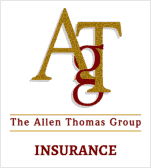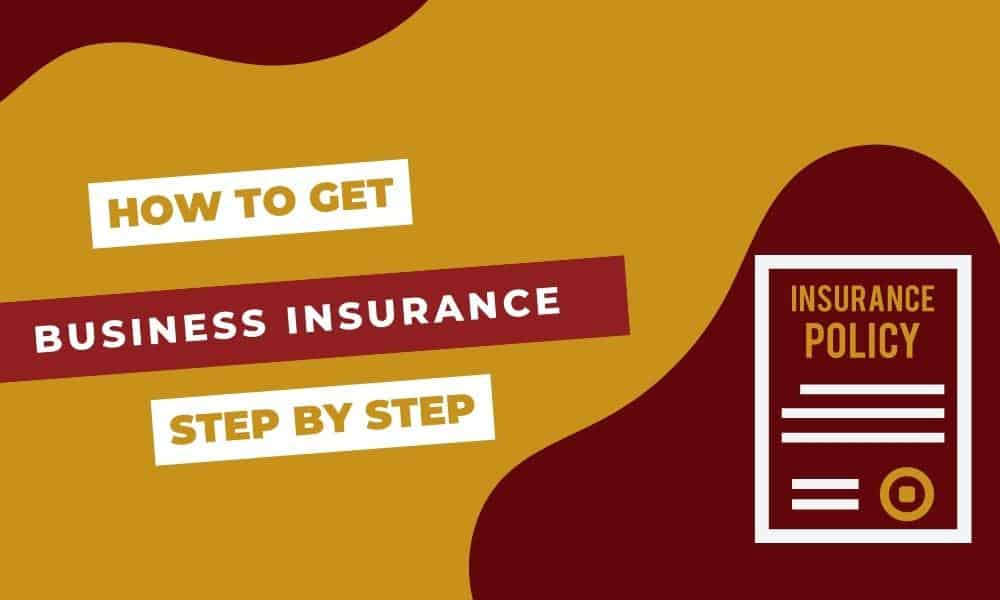How to Get Business Insurance: A Step-by-Step Guide
Navigating the world of business insurance can be like traversing a dense forest at night without a compass. Unsuspecting businesses often stumble through the underbrush, tripping over hidden pitfalls and missing out on unseen opportunities.
With this step-by-step guide, we are handing you the flashlight to illuminate your path. Let us help you secure optimal coverage that safeguards your business dream, protects you from unexpected tragedies, and fosters an environment for unhindered growth.
This is not just about getting insurance; it’s about getting the right insurance for your business!
Buckle up as we journey into the world of business insurance—your indispensable aid in turning your bold entrepreneurial vision into a sustainable reality.
To get insurance for a business, follow 6 these steps:
- Identify the types of coverage your business needs based on its size, industry, and risks.
- Research different insurance providers and policies to find ones that meet your needs and budget.
- Contact an insurance agent or broker specializing in commercial insurance to help you navigate the process.
- Obtain quotes from multiple providers to compare premiums, deductibles, and coverage limits.
- Review policy terms and conditions carefully before signing a contract.
- Ensure you maintain proper policy documentation, including receipts, invoices, and policy details.
By following these steps, you can protect your business against unexpected events that could cause financial losses.
Evaluating Your Business Risk
Before purchasing business insurance, evaluating the risks your company faces is essential. Take the time to conduct a thorough assessment of your business, including the industry in which you operate, the size of your company, your location, and potential risks that could arise. When evaluating risk, consider worst-case scenarios. This might include natural disasters, lawsuits, thefts, or accidents.
For instance, let’s say you own a small retail store in an area frequented by severe thunderstorms. It would be best to ignore that your location could be susceptible to flooding. In such a situation, if you don’t have business insurance coverage for floods or other natural disasters, the expenses incurred during repairs can put you out of business.
However, do not overestimate the risks of certain events like natural disasters in areas where they are rare occurrences. Equally important is identifying and mitigating internal risks within your company, such as employee theft and administrative errors.
Evaluating business risk is like taking care of your health – prevention is better than cure. Just as analyzing symptoms can allow for early detection and treatment of diseases before they develop into more severe conditions, examining risk factors can help prevent financial collapse due to unexpected losses.
The next step in assessing your business’ risk is identifying all possible loss situations.
Key Statistics:
- The Insurance Information Institute reported that 40% of small businesses will experience a property or liability loss in the next ten years.
- According to the Bureau of Labor Statistics, in 2020, employers paid an average of $1.09 per hour for workers’ compensation, representing 2.6% of total compensation costs.
Identify Possible Loss Situations
Identifying possible loss situations that threaten your company is crucial when purchasing any business insurance policy. Once you’ve identified all potential risks to your company through careful evaluation, you need to categorize them based on the frequency and how much impact they might have on your business.
Suppose you own a restaurant that specializes in seafood cuisine. Food contamination could lead to lawsuits against you from sick customers or the closure of your eatery — making it difficult to operate. Therefore, you should consider purchasing food contamination insurance coverage.
Remember that every business is unique, as are the risks you may face. Sometimes, a company’s most significant loss situation could differ entirely from what you initially anticipated. For example, an online store may have more significant losses from cyberattacks which they might not realize until it happens.
Some risks are insurable, while others aren’t. It’s essential to discern the difference between minor risks you can absorb and significant risks that could pose financial difficulties. By considering all loss situations and how much they impact your business’s finances, you’ll understand what needs protection through a business insurance policy.
The next step is calculating potential costs associated with each loss situation and identifying the type of coverage required to protect your business from such losses.
Calculate Potential Costs
When finding the right business insurance policy, one of the most critical steps is calculating potential costs. This will help you determine how much coverage you need and which policies are necessary for your specific business.
To begin, identify all possible loss situations that your business could face. Consider everything from property damage and theft to employee injuries and product liability claims. Once you have a comprehensive list, estimate the potential costs associated with each scenario. This includes direct expenses like medical bills or repair costs and indirect costs such as lost income or legal fees.
For example, imagine your small retail store experiences a fire that damages the building and destroys your inventory. In addition to repairing the physical damage, you’ll likely need to close for several weeks while cleanup and restocking occur. This could mean substantial lost income and potential customer loss.
By assessing all possible loss scenarios and estimating their costs, you can ensure that you purchase enough coverage to keep your business safe and secure.
Consider a freelance graphic designer who primarily works from home. While they may not face many risks related to property damage or on-site injury, they could be vulnerable to cybersecurity threats or accusations of copyright infringement by clients. Both situations could result in significant financial losses without proper insurance coverage.
Calculating potential costs is not always straightforward, especially if your business is still in its early stages. Some unexpected events may occur that you did not consider when first purchasing insurance. However, considering as many possibilities as possible is an excellent starting point for finding suitable coverage.
It’s also important to note that overestimating the cost or likelihood of certain events could lead to unnecessary expenses for insurance coverage. For instance, smaller businesses may not need directors and officers (D&O) liability insurance unless they have a board of directors. Thus, it’s crucial to balance potential risks and necessary coverage.
- When purchasing a business insurance policy, assessing potential loss scenarios and accurately estimating associated costs is essential. This can help determine the necessary coverage types and amounts for your specific business. While it’s important to consider as many possibilities as possible, overestimating risks could lead to unnecessary expenses. Striking a balance between potential risks and the necessary coverage is critical.
Understanding Business Insurance Coverage
Business insurance policies can differ significantly based on your industry, size, and specific requirements. It’s essential to understand what types of coverage are available so that you can select the right policies for your company.
Some of the most common business insurance policies include:
General liability insurance: this is designed to protect businesses against claims related to bodily injury, property damage, advertising injury, and reputational harm.
Property insurance covers physical damage to a company’s assets, such as buildings, equipment, and inventory.
Product liability insurance: this provides protection in case products sold or manufactured by your business cause injury or harm to customers.
Professional liability insurance, also known as errors and omissions (E&O) insurance, provides coverage if a business faces a negligence claim due to errors or mistakes in professional services provided to clients.
Workers’ compensation: this type of policy is required by law in most states. It provides compensation for employees who suffer job-related injuries or illnesses.
Cyber liability insurance: this policy protects businesses from losses related to data breaches or other cyber attacks.
Consider an independent medical clinic that sees hundreds of patients each week.
In addition to general liability insurance and property insurance, they might also need malpractice insurance for their healthcare professionals and workers’ compensation for nursing and administrative staff. The clinic may also need cyber liability coverage as technology becomes more integrated into patient care.
By comprehensively understanding these different types of business insurance policies, you can work with an agent or broker to create the best possible solution for your business risk management strategy.
Depending on your industry and business model, you may not require every type of policy listed above. Some companies may be able to bundle coverages together into packages that meet their specific needs and budget requirements.
Common Types of Business Insurance Policies
Different types of business insurance policies cover a variety of risks and liabilities.
As you evaluate your business risk, you need to understand the different types of insurance policies available to identify which ones suit your business needs.
Here are some common types of business insurance policies.
- Commercial General Liability Insurance: This is one of the most common types of business insurance policies, which protects businesses from claims related to property damage, bodily injury, and personal injury resulting from your products, services, or operations.
- Professional Liability Insurance: Also known as Errors and Omissions (E&O) insurance, this policy protects professionals against claims arising from negligence, mistakes, or omissions while providing professional services. It’s perfect for doctors, accountants, consultants, and other professionals.
- Product Liability Insurance: This covers businesses if customers claim damages from their products. It is significant for companies that manufacture and sell goods.
- Commercial Property Insurance: This ensures the loss or damage of a company’s property due to various causes such as fire, theft, or natural disasters.
- Business Interruption Insurance: This policy covers loss of income due to covered incidents that make it impossible to conduct normal business operations.
- Cyber Liability Insurance: This type of policy provides coverage for businesses in the event of data breaches, cyber-attacks, and other online threats.
For instance, imagine you run a software development firm that creates software for healthcare providers. One day one of your clients suffers significant financial losses because of a programming error in your software.
Without Errors and Omissions (E&O) insurance, you could face substantial legal fees and compensation costs related to this error. Professional liability insurance would come into play here by covering those legal fees and any compensation costs incurred by your client due to comprehensive protection provided against such liability claims.
Now that you better understand the types of insurance policies available and what they usually cover, it’s time to start exploring different insurance providers before finalizing and purchasing your insurance policy.
Comparing Insurance Providers
When searching for business insurance, it’s essential to compare providers to make an informed decision. With so many options available, it can be overwhelming to determine which insurer is the best fit for your business. One vital factor to consider is the company’s reputation. Look for reviews and ratings regarding their level of customer service and claim processing. A highly-rated insurer with a strong reputation will offer peace of mind that claims will be handled efficiently.
Another factor to consider when comparing insurance providers is the coverage offered. Each insurer has unique policies concerning coverage limits, deductibles, and exclusions. Therefore, it’s crucial to understand their policies before making any purchase decisions. Ensure you’re getting the right product at the best value by extensively researching available plans and pricing structures.
Additionally, insurers’ financial stability plays a significant role in determining the best choice for business insurance. It’s wise to evaluate various providers’ financial backing to determine if they can stand up against catastrophic losses. Confirm that the selected insurance provider is stable financially and has a good track record of paying claims.
Suppose you doubt an insurer’s reliability or want an objective outlook on their services. In that case, working with independent agents or brokers who can provide detailed analyses and make recommendations based on market trends may be beneficial. This way, you can get more insight into each prospective insurance provider and select one that meets your business’s unique needs.
Lastly, analyzing how each provider treats its policyholders during misfortune can help make a final purchasing decision. You’ll want assurance that your provider offers exceptional support if you ever need it most – after experiencing property damage or liability issues. To find out, research each prospective provider’s claim handling process – how fast claims are processed and how payouts are calculated.
Now that we’ve evaluated the essential factors to consider when comparing insurers let’s explore some crucial things to look out for when selecting an insurer that aligns with your business needs.
Factors to Consider When Comparing Insurers
One of the most critical considerations is the providers’ scope of coverage.
Some policies may have overlapping areas, while others may leave some risks uninsured. Seek a policy that fits your business and leaves no critical risks uncovered. Our commercial insurance agents can help you identify gaps in coverage.
Another factor in evaluating when comparing insurers is fees and premiums charged for coverage offered.
While low premiums may seem attractive initially, bear in mind that cheaper policies generally lead to a less inclusive range and a higher likelihood of making out-of-pocket payments after damages or liability claims.
You’ll also want to verify the availability of customization options for each policy. This way, you can tailor the insurance coverage precisely to your business needs instead of settling for off-the-shelf, one-size-fits-all approaches.
Think of it as buying clothes – we all have different body shapes and sizes, making it impossible to find an outfit that fits everyone perfectly. In the same vein, insurance policies should be explicitly tailored to individual businesses’ unique case-by-case situations.
Furthermore, customer support is another primary consideration in evaluating which insurer best suits your business needs. Quality customer support is necessary since getting adequate assistance in difficult periods is critical.
Finally, consider any potential discounts offered by the providers you’re researching. These often come in different forms and could include lower rates or other perks, such as waived installment fees. Identifying providers who offer discounts on insurance policy plans could help save your business money.
After identifying appropriate carriers that fit your business’s unique requirements, it’s time to finalize a purchase decision and enjoy quality coverage from a dependable provider.
Finalizing and Purchasing Your Business Insurance Policy
After evaluating your business risk, identifying possible loss situations, calculating potential costs, and understanding business insurance coverage, you have finally reached the last step in securing your business with insurance. Now it’s time to finalize and purchase your business insurance policy.
First, you need to review all the quotes gathered from different insurers. Take note of the coverage types, limits, deductibles, and premiums. Make sure you understand each quote and ask any questions you might have before finalizing a decision.
Keep in mind that selecting an insurer based solely on price is not always the best route. When choosing, it’s important to weigh factors like financial stability, customer service ratings, and claims handling.
Once you’ve reviewed the quotes thoroughly and decided which insurer to purchase from, it’s time to sign up for an insurance policy.
Your policy should clearly state what is covered or excluded and under what circumstances coverage applies. Be sure you understand what is written in it before signing. It would be best to explicitly communicate the insured value of property or inventory to ensure everything is accurately accounted for.
If specific parts of your property or inventory require higher value coverage because they are more vulnerable than others to theft or damage, consider raising their value. Remember that businesses shouldn’t insure against things they could pay for themselves- this is where accurate calculations come into play again.
Think of purchasing a business insurance policy similarly to buying auto insurance. You wouldn’t buy a car without doing some research upfront; again, don’t pick an insurer without researching its reputation or purchasing a policy without understanding its terms.
At The Allen Thomas Group, we recommend evaluating all aspects of your business when determining what insurance policies you need. Risk can happen in many forms- and not being adequately insured can have dire repercussions.
Once you’ve reviewed the appropriate type of coverage for your business and compared quotes between insurance providers, you can finalize and purchase your business insurance policy.
Remember, having business insurance will give you peace of mind and will help you overcome any crisis that may come up.
Responses to Frequently Asked Questions with Explanations
Are there any special considerations businesses must make when operating in specific industries or locations?
Yes, there are undoubtedly special considerations that businesses need to make when operating in specific industries or locations. For example, construction companies may require more liability coverage due to the higher risk of accidents on job sites. Similarly, businesses located in areas prone to natural disasters such as hurricanes or earthquakes may need to invest in specialized insurance policies that cover property damage caused by these events.
According to a National Oceanic and Atmospheric Administration report, the United States experienced 22 weather-related disasters in 2020 alone, resulting in over $95 billion in damages. This highlights the importance for businesses in disaster-prone locations to have proper insurance coverage.
Another important consideration is the regulatory environment of specific industries. For instance, healthcare providers may face unique liability risks due to the nature of their services and compliance with regulations such as HIPAA. The food and beverage industry also has risks related to food safety and product liability.
In summary, businesses operating in specific industries or locations must carefully evaluate their insurance needs and ensure proper coverage to mitigate their risks. It’s always best to consult an experienced insurance broker who can provide guidance tailored to your business needs.
What types of insurance policies are available specifically for businesses?
There are several types of insurance policies available specifically for businesses. Some of the most common policies include:
- Commercial General Liability Insurance: This type protects businesses from third-party claims related to bodily injury, property damage, and advertising injuries. According to a survey by Insureon, 42% of small businesses have reported experiencing a lawsuit or high-risk event within the past year, making this coverage essential.
- Property Insurance: This policy protects business property and inventory against losses due to theft, natural disasters, and other perils. Small Business Trends reports that only 35% of small businesses hold this insurance policy.
- Workers’ Compensation Insurance: This type of policy covers medical expenses and wage replacement for injured employees. According to the National Safety Council, workplace injuries cost U.S. employers $171 billion in 2019.
- Cyber Insurance: This newer option can cover data breaches and cyberattacks, resulting in substantial costs for businesses trying to repair their systems and reputation. The Identity Theft Resource Center’s 2020 Data Breach Report shows that 36% of breaches occur in healthcare organizations, followed by education (18%) and government/military (17%).
Overall, knowing which types of insurance policies can protect your business is essential in preventing costly legal or financial risks down the line. It’s important to consider your industry-specific risks when choosing which policies to invest in.
How does obtaining insurance for a business differ from personal insurance policies?
Obtaining insurance for a business is a different ball game than obtaining personal insurance policies, and it requires a more strategic approach.
While private insurance policies cover individuals or families, business insurance policies cover businesses, including their assets, operations, and employees.
One critical difference between personal and business insurance policies lies in the risk assessment process. Insurance companies assess risk differently depending on whether they cover an individual or a business.
Business owners have to go through rigorous underwriting processes that focus on analyzing potential liabilities, assessing risks associated with operations, and forecasting future exposure to loss. For instance, if you own a high-risk business such as construction or manufacturing, your premium will likely be higher than if you operated a safer retail store.
Another difference is that personal insurance policies tend to have more standardized packages and pricing options than business policies. In contrast, insurers customize business policies to fit the specific needs of each enterprise. A tech firm may require cyber liability coverage, while a transportation company might need commercial auto insurance. Small businesses can also bundle several types of coverage under one policy for cost efficiency, while more prominent companies may purchase standalone products.
In summary, although personal and business insurance aims to protect against potential risks and losses, their differences lie primarily in the scope and complexity of coverage required. According to the National Association of Insurance Commissioners (NAIC), over 5 million small businesses are employing over 56 million people across America who will all have unique needs when it comes to purchasing Business Insurance Policies in 2023 – this means that finding the correct type of coverage with the most relevant terms and premiums of each company is crucial for protecting their investments and bottom lines.
What factors affect the cost of business insurance premiums?
There are a variety of factors that can affect the cost of business insurance premiums. One of the biggest is the type of coverage required for your business. For example, if you have employees, you’ll likely need workers’ compensation insurance, which can increase your premiums significantly.
Other factors to consider include your business’s size and location, industry and profession, and claims history. Insurance companies will assess the level of risk they perceive when insuring your company and its assets.
According to a study by Insureon, small businesses with fewer than ten employees pay an average of $1,281 per year for general liability insurance. In comparison, those with 11-25 employees pay an average of $1,641 annually.
Additionally, businesses located in high-crime areas or areas prone to natural disasters may pay higher premiums due to the increased risk of property damage or theft.
Ultimately, shopping around for insurance providers and carefully evaluating their policies and pricing before deciding is essential. You can find business insurance coverage that meets your needs and budget with careful consideration and planning.
What are some common mistakes businesses make when selecting insurance policies?
When it comes to selecting insurance policies for your business, there are some common mistakes that you should avoid. One of the biggest mistakes companies make is purchasing insurance based solely on price. While cost is certainly an important factor, it shouldn’t be the only consideration.
Another mistake that businesses often make is failing to assess their risk and coverage needs accurately. Every business is unique and requires different levels of coverage based on factors such as industry type, location, and size. Failure to recognize these factors can result in inadequate coverage when a claim occurs.
Businesses may also overlook the importance of reading and understanding policy details thoroughly. A study by The Hanover Insurance Group found that only 38% of small business owners surveyed were confident about understanding their insurance policies.
Finally, procrastination is another common mistake businesses make when selecting insurance policies. Waiting until an incident or disaster occurs to purchase insurance can lead to increased premiums and reduced benefits. It’s crucial to review and update your policies regularly to ensure you always have adequate coverage.
Overall, selecting the right insurance policy for your business can be daunting, but avoiding these common mistakes can help you make more informed decisions and secure the protection you need for your business to thrive.












